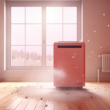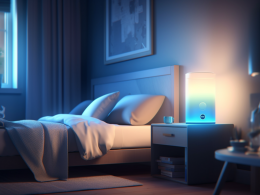Dust is an inevitable annoyance that can affect the cleanliness and air quality of your home. Whether you suffer from allergies, asthma, or simply want to breathe fresher air, finding effective ways to eliminate dust particles is essential. In this guide, we will explore various methods and strategies to help you get rid of dust in the air, ensuring a healthier and more comfortable living environment for you and your loved ones.
Understanding the Sources of Dust
To effectively combat dust, it’s essential to understand where it originates. Dust particles can come from various sources, including outdoor pollutants, dead skin cells, pet dander, pollen, and fibers from fabrics or furniture. By identifying these sources, you can target specific areas and implement appropriate measures to reduce dust accumulation.
Importance of Clean Air
Clean air is vital for our overall well-being, as it ensures that we breathe in fresh and healthy oxygen. Dust particles can contribute to respiratory problems and allergies, making it crucial to maintain a dust-free environment. Removing dust from the air not only enhances air quality but also reduces the risk of health issues associated with airborne particles.
Regular Cleaning Routine
Establishing a regular cleaning routine is the foundation for combating dust in the air. Here are some key tips to consider:
- Dust surfaces using microfiber cloths or electrostatic dusters, which attract and trap dust more effectively.
- Vacuum carpets and rugs at least once a week, paying extra attention to high-traffic areas.
- Sweep and mop hard floors using microfiber mops or damp cloths.
- Wash bedding and soft furnishings regularly to eliminate dust mites.
- Use a HEPA filter in your vacuum cleaner to capture small dust particles effectively.
Enhancing Indoor Air Filtration
Improving indoor air filtration is a crucial step in reducing dust particles. Consider the following:
- Install high-quality air filters in your HVAC system and replace them regularly.
- Use air purifiers with HEPA filters to remove airborne allergens and dust particles.
- Place air purifiers strategically in rooms where you spend the most time.
- Keep windows and doors closed during periods of high outdoor pollen or pollution.
Controlling Humidity Levels
Maintaining optimal humidity levels in your home can help prevent excessive dust accumulation. Consider the following measures:
- Use a dehumidifier in areas prone to high humidity, such as basements or bathrooms.
- Keep indoor humidity levels between 30% and 50% to discourage dust mites.
- Fix any plumbing leaks promptly to prevent moisture buildup.
Minimizing Clutter and Dust Accumulation
Reducing clutter not only makes your home more organized but also minimizes dust accumulation. Follow these tips:
- Declutter regularly and keep surfaces clear of unnecessary items.
- Use storage solutions like bins or baskets to keep belongings contained.
- Avoid excessive decoration with objects that collect dust easily.
Proper Ventilation and Air Circulation
Proper ventilation and air circulation play a crucial role in minimizing dust buildup. Here’s what you can do:
- Open windows and doors to allow fresh air to circulate.
- Use exhaust fans in kitchens and bathrooms to remove humidity and airborne particles.
- Ensure that air vents and ducts are clean and unobstructed.
Using High-Efficiency Vacuum Cleaners

Investing in a high-efficiency vacuum cleaner can significantly reduce dust in the air. Consider the following features:
- Look for vacuums with HEPA filters that effectively trap small dust particles.
- Opt for vacuum cleaners equipped with rotating brushes for deep cleaning carpets.
- Empty vacuum bags or canisters regularly to prevent dust from recirculating.
Cleaning Soft Furnishings and Fabrics
Soft furnishings and fabrics can harbor dust and allergens. Take these steps to keep them clean:
- Vacuum upholstery and curtains regularly using an upholstery attachment.
- Wash removable fabric covers and cushions according to manufacturer instructions.
- Consider using dust mite-proof covers for mattresses and pillows.
Choosing Dust-Resistant Materials
When selecting furniture and decor, opt for materials that are resistant to dust accumulation:
- Choose leather or vinyl furniture instead of fabric upholstery.
- Opt for blinds or shades instead of fabric curtains.
- Select smooth, easy-to-clean surfaces for countertops and tabletops.
Regular Maintenance of HVAC Systems
Proper maintenance of HVAC systems is crucial for dust control. Follow these guidelines:
- Schedule regular professional inspections and cleanings of your HVAC system.
- Change HVAC filters according to manufacturer recommendations.
- Keep outdoor units free from debris and vegetation.
Air Purifiers and Filters
Air purifiers and filters can be effective tools in reducing dust particles. Consider the following:
- Choose air purifiers with HEPA filters for optimal dust removal.
- Place air purifiers in bedrooms and living areas for better air quality.
- Change air purifier filters according to manufacturer instructions.
Professional Air Duct Cleaning
Over time, dust can accumulate in your home’s air ducts, contributing to airborne particles. Hiring professionals for air duct cleaning can provide the following benefits:
- Thoroughly remove dust and debris from the air ducts.
- Improve air circulation and HVAC system efficiency.
- Reduce the presence of allergens and dust particles in the air.
Natural Remedies for Dust Control
In addition to the above methods, several natural remedies can assist in dust control:
- Use essential oils with dust-repelling properties, such as eucalyptus or tea tree oil.
- Use natural cleaning solutions, like vinegar and water, to wipe surfaces.
- Place houseplants known for their air-purifying properties, such as spider plants or peace lilies.
Conclusion
Maintaining a dust-free environment is essential for a healthier home and improved air quality. By implementing the strategies outlined in this guide, you can effectively get rid of dust in the air. Remember to establish a regular cleaning routine, enhance indoor air filtration, control humidity levels, minimize clutter, and consider professional assistance when necessary. By taking proactive measures, you’ll create a more comfortable and dust-free living space for you and your family.
FAQs
1. How often should I clean my air ducts?
Air duct cleaning should be performed every 3 to 5 years, depending on factors such as the presence of pets, allergies, or recent renovations. Regular inspections can help determine the frequency of cleaning required.
2. Are air purifiers effective in removing dust?
Yes, air purifiers with HEPA filters are highly effective in removing dust particles from the air. They can significantly improve indoor air quality and reduce allergy symptoms.
3. Can I use a regular vacuum cleaner to remove dust?
While regular vacuum cleaners can remove surface dust, they may not capture small particles effectively. Consider using a vacuum cleaner with a HEPA filter for optimal dust removal.
4. Are natural remedies as effective as chemical cleaners?
Natural remedies can be effective in controlling dust, but their efficacy may vary. They offer a safer and eco-friendly alternative to chemical cleaners but may require more frequent applications.
5. How can I reduce dust mites in my home?
To reduce dust mites, wash bedding and soft furnishings regularly, maintain optimal humidity levels, and use dust mite-proof covers for mattresses and pillows. Vacuuming and dusting regularly also help minimize their presence.










